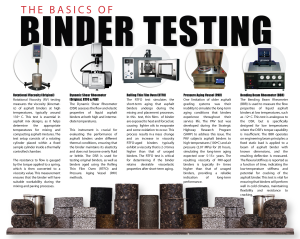- AASHTO-Accredited Lab -
Concrete petrography services from CMT Technical Services give you a microscopic view of hardened concrete. Our AASHTO-accredited lab team quickly evaluates air-void structure, chloride ion content, alkali–silica reactivity (ASR), depth of carbonation, and more.
-
Evaluate your concrete with a variety of tests
EVALUATE YOUR CONCRETE
Concrete petrography services from CMT Technical Services give you a microscopic view of hardened concrete. Using this insight, you can confirm durability, diagnose failures, and keep your schedule intact. Our AASHTO-accredited lab team quickly evaluates air-void structure, chloride ion content, alkali–silica reactivity (ASR), depth of carbonation, and more. Because we serve Arizona, Colorado, Idaho, Texas, and Utah, samples move from field to actionable report without delay—helping engineers and owners make data-driven decisions.
Why Choose Concrete Petrography Services? Petrography offers in-depth evaluation of your concrete so you can feel confident in the quality, reliability, and structural integrity of the material itself and all projects utilizing it. Trust us to use a variety of methodologies to investigate your concrete’s characteristics and ensure proper usage.
In addition to standard compressive testing, we offer:
- Alkali-silica reactivity (ASR)
- Chloride ion content
- Surface delamination checks
- Degree of hydration, and more.
-
Find out more about our variety of Petrographic examination tests
OUR VARIETY OF PETROGRAPHIC EXAMINATION TESTS & MICROSCOPIC CONCRETE ANALYSIS
- Alkali-silica reactivity
- Chloride ion content
- Surface delamination
- Degree of hydration
- Depth of carbonation
- Estimated water content ratio
- Full petrographic examination
- Hardened air void analysis
-
What can a Petrographer do for you?
WHAT CAN A PETROGRAPHER DO FOR YOU?
A petrographic report can verify in-place air content, surface finish quality, and curing results. Furthermore, it pinpoints the root causes of premature cracking or long-term deterioration by examining the air-void system, depth of carbonation, water-cement ratio, and chloride penetration at the rebar depth.
Assess the quality of the processes by verifying:
- In-place air content and model of the structure
- Air content on the surface
- Placement or finishing problems
- Hydration or curing problems
Determine causes of premature failure and long-term deterioration of concrete, through testing:
- Air void system
- Alkali-silica reactivity (ASR)
- Depth of carbonation
- Chloride ion content
- Water/cement ratio
- At the surface and depth of the rebar
- Compressive strength
- Unit weight
-
Hardened Air Void Analysis (ASTM C457)
HARDENED AIR VOID ANALYSIS (ASTM C457)
Uniformly dispersed air voids raise durability and workability. They boost freeze–thaw resistance and limit scaling. In addition, they reduce bleeding and segregation—two common causes of surface defects.
ASTM Methods We Follow
-
Chloride Ion Content
CHLORIDE ION CONTENT
When de-icing salts reach the steel depth, corrosion accelerates. Our chloride test quantifies ion concentration, thereby enabling timely mitigation.
-
Other Services
OTHER SERVICES
Cracking Investigation
Unexplained cracks call for a visual survey or core sampling. After gathering evidence, we determine the most probable cause—be it plastic shrinkage, ASR, or overload.
Degree of Hydration
Concrete gains strength as hydration proceeds. However, curing temperature, age, and water availability all affect the rate. Our analysis measures the current hydration level so you know whether strength targets are realistic.
Depth of Carbonation
Carbonation lowers concrete pH. Consequently, the passive layer on the reinforcing steel can break down. We map the carbonation front to guide repair depth.
Estimated Water-Cement Ratio
A high water–cement ratio often predicts lower strength. By comparing the estimated ratio with mix design values, we flag potential quality issues.
Full Petrographic Examination
Some problems demand a comprehensive look. For those cases, we combine macroscopic, microscopic, and chemical techniques to deliver a single, coherent diagnosis.
Other Laboratory Testing Services by CMT
-
Why Choose Concrete Petrography Services?
WHY CHOOSE CMT
Petrography provides an in-depth look at your mix so you feel confident in its strength and reliability. Moreover, our specialists apply several proven methods—optical microscopy, chemical testing, and micro-CT scanning—to reveal hidden concerns before they become costly issues.
-
Ready to Start?
Ready to Start?
Let’s talk about your next project today. Request a Quote Here

 Close
Close
